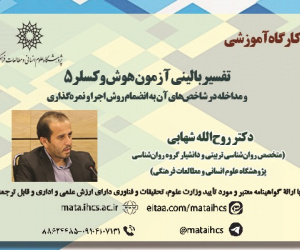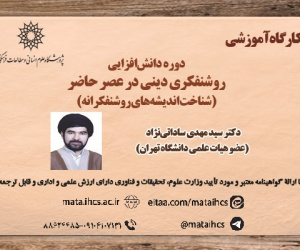اثر نامتقارن بلایای طبیعی بر رشد اقتصادی در ایران: رویکرد NARDL در چارچوب نظریه سولو – سوان (مقاله علمی وزارت علوم)
درجه علمی: نشریه علمی (وزارت علوم)
آرشیو
چکیده
دستیابی به نرخ رشد اقتصادی بالا در فرایند توسعه پایدار به معیاری مهم برای افزایش رفاه جامعه، کاهش فقر، نابرابری ها و تقویت اقتدار ملی تبدیل شده است. ازاین رو، شناسایی عوامل مؤثر بر رشد اقتصادی یکی از مسائل اصلی سیاست گذاران است. ادبیات نظری نشان می دهد عامل های غیرقابل پیش بینی مانند بلایای طبیعی می توانند موانع مهمی برای دستیابی به اهداف رشد اقتصادی باشند. بنابراین، مطالعه حاضر برای بررسی این سؤال که بلایای طبیعی چگونه بر رشد اقتصادی تأثیر دارد؟ انجام شده است و خلأ ادبیات نامتقارن در اقتصاد ایران را پر می کند. از این رو، چارچوب نظری این مطالعه، بر پایه نظریه رشد اقتصادی سولو – سوان بنا شده است. در این راستا مدل پژوهش با استفاده از رویکرد خود توضیح با وقفه های گسترده غیرخطی طی دوره زمانی (1401-1359) برآورد شده است. نتایج نشان می دهد که بلایای طبیعی در کوتاه مدت و بلندمدت به صورت نامتقارن باعث کاهش رشد اقتصادی در ایران شده است. سایر نتایج نیز نشان داد که آزادسازی تجاری و نرخ پس انداز سرمایه فیزیکی اثر مثبت و عبارت (n+g+δ) اثر منفی بر رشد اقتصادی دارند. باتوجه به نتایج، توصیه می شود که سیاست های مناسب جهت افزایش تاب آوری جامعه و بخش های تولیدی کشور برای مقابله با بلایای طبیعی اجرا شود تا جریان رشد پایدار اقتصادی کشور تضمین شودThe Asymmetric Effect of Natural Disasters on Economic Growth in Iran: The NARDL Approach within the Framework of the Solow-Swan Theory
Achieving a high economic growth rate during the process of sustainable development has become a crucial criterion for enhancing societal welfare, reducing poverty and inequality, and strengthening national authority. Therefore, identifying the factors that affect economic growth is a primary issue for policymakers. Theoretical literature suggests that unpredictable factors, such as natural disasters, can pose significant obstacles to achieving economic growth objectives. Thus, the present study was conducted to explore how natural disasters affect economic growth and fill the gap in the literature on asymmetric economics in Iran. The theoretical framework for this study is based on the Solow-Swan economic growth theory. In this context, the research model has been estimated using the NARDL method for the period between 1980 and 2023. The results indicate that natural disasters (NDI) asymmetrically reduce economic growth in Iran in both the short and long term. Further results demonstrate that trade liberalization (TO) and the physical capital savings rate (s) have a positive influence on economic growth, while the term (n + g + δ) negatively impacts economic growth. In light of these findings, it is recommended that suitable policies be implemented to enhance the resilience of society and the nation's productive sectors, thereby effectively addressing natural disasters and ensuring sustainable economic growth for the country







